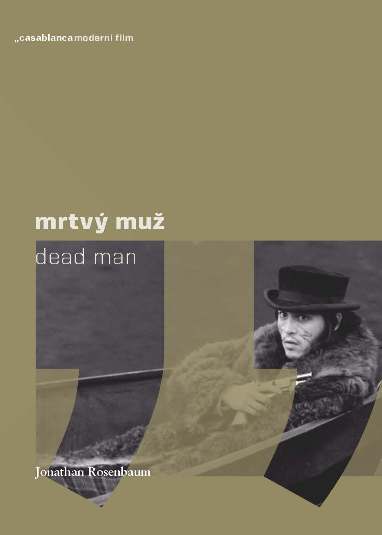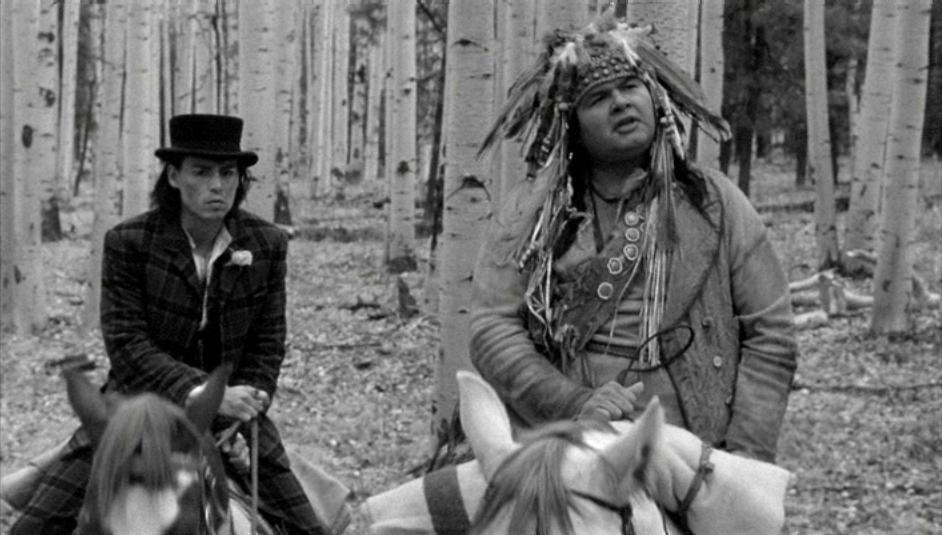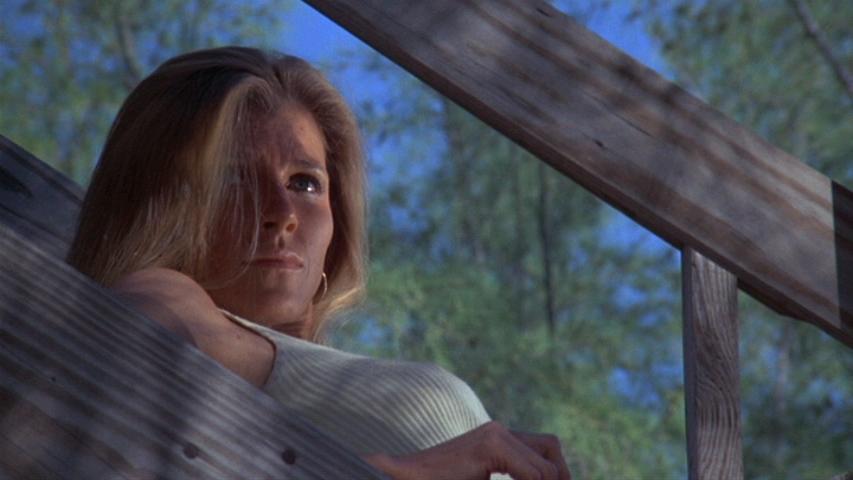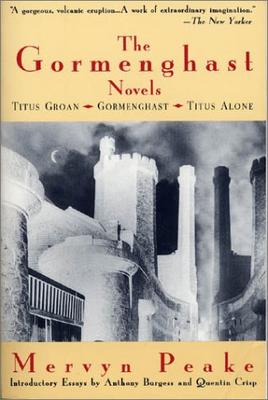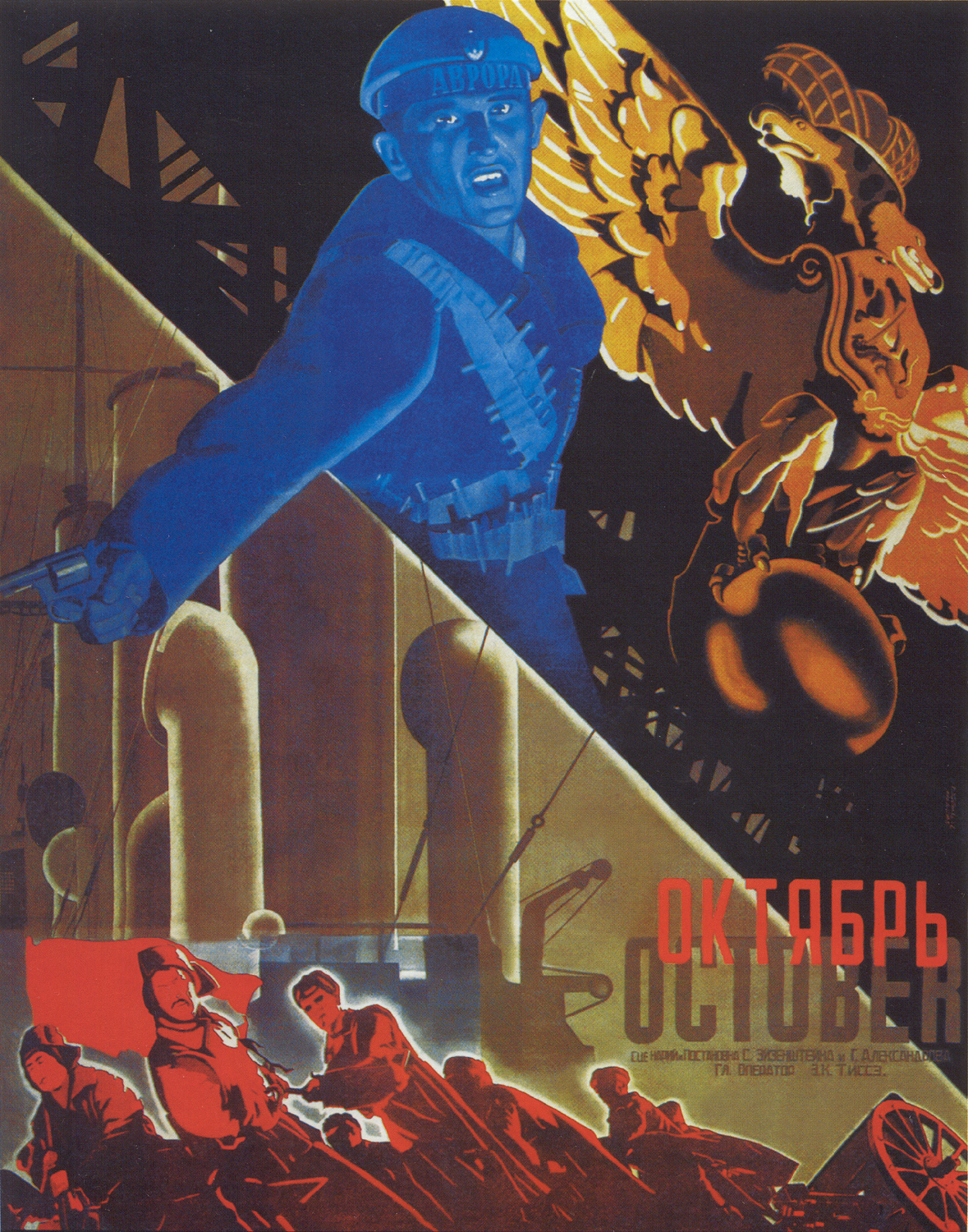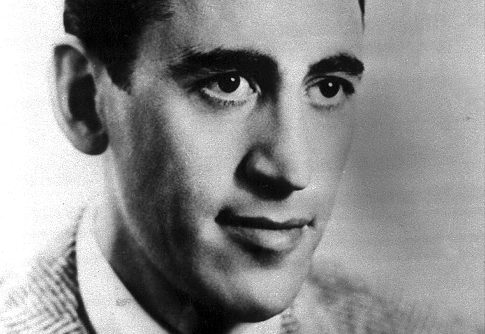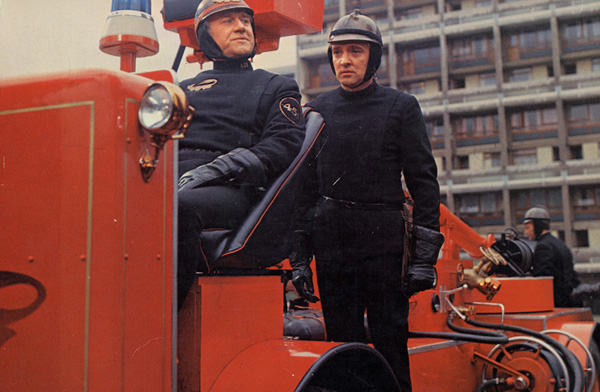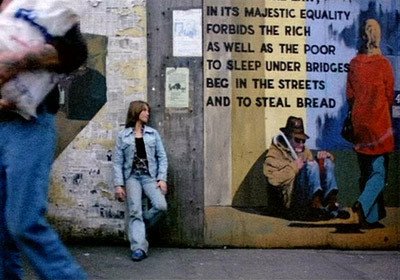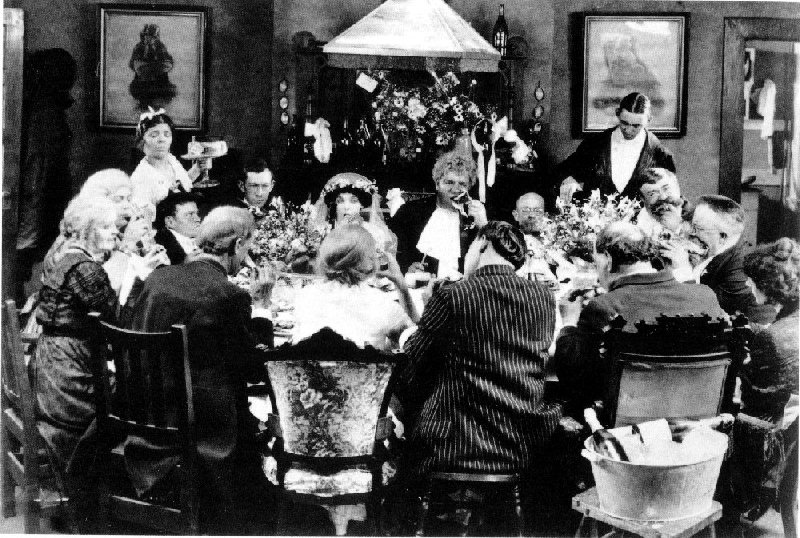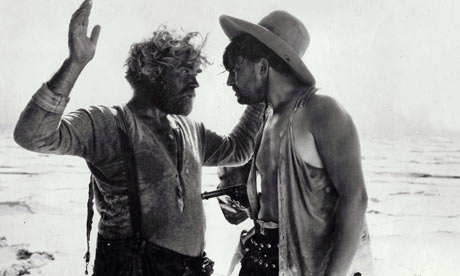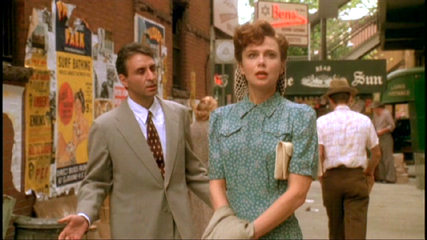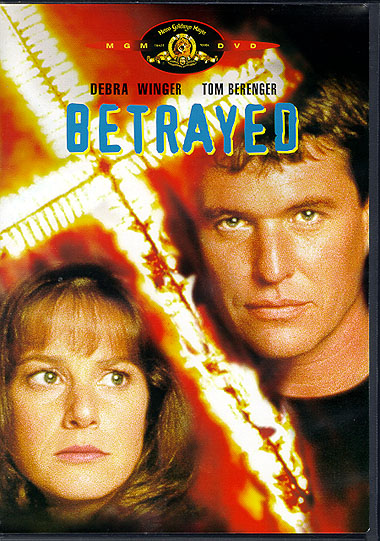Monthly Archives: March 2024
DEAD MAN in 2010: A Czech Preface
This was written in September 2010 to introduce the Czech translation and edition of my book about Dead Man (BFI, 2000). — J.R.
During the fifteen years that have passed since Jim Jarmusch’s sixth and most ambitious feature premiered in Cannes, it’s been gratifying to see its critical reputation steadily rising, especially in the U.S.And during the last two-thirds of this period, after this book made its first appearance, I’ve been pleased to see its constituency growing. It has subsequently had a second edition in English, which appeared in 2008, and a French translation, by Justine Malle (a daughter of Louis Malle), published by Les Éditions de la Transparence in 2005. Now that it’s coming out in a Czech edition, it’s worth mentioning (but not dwelling too much on) the fact that Jarmusch’s paternal grandparents were Bohemian, although they never spoke any Czech in his presence. (He also told me, with some hesitation, that his mother’s parents may have been Irish; he isn’t even sure about this.) I was in Cannes in 1995, and the several walkouts during the picture that I witnessed were hardly unprecedented, especially for a demanding film of this kind at this festival. But for many years afterwards, the film qualified as a film maudit, and not only because its own American distributor, Miramax, appeared to want it to fail, after it became clear that Jarmusch had no intentions of following any of its suggestions for re-editing (specifically, those of Harvey Weinstein) — an attitude in striking contrast to that of Weinstein protégé Quentin Tarantino, misleadingly identified as an independent filmmaker, who seemed quite happy to forego final cut in exchange for getting Weinstein’s unlimited support. Read more
R.I.P. Arthur Penn 1922-2010
This review of Night Moves appeared in the May 1975 issue of Monthly Film Bulletin. [September 11, 2009 postscript: Having just reseen Night Moves for the first time since it came out, I think it holds up remarkably well, in terms of its script and direction and almost uniformly fine performances. There’s also some additional interest now in seeing Melanie Griffith in her first credited performance and James Woods, less impressive, in one of his earliest after Elia Kazan discovered him for The Visitors. As for Alan Sharp, it would appear that his filmography (which also includes The Hired Hand and Ulzana’s Raid) warrants further investigation — as does Jennifer Warren’s.]—J.R.
U.S.A., 1975
Director: Arthur Penn
Cert—X. dist—Columbia-Warner. p.c—Hiller Productions/Layton. p—Robert M. Sherman. assoc. p—Gene Lasko. p. manager—Thomas J. Schmidt. asst. d—Jack Roe, Patrick H. Kehoe. sc—Alan Sharp. ph—Bruce Surtees. col—Technicolor. underwater ph—Jordan Klein. ed—Dede Allen, Stephen A. Rotter. p. designer—George Jenkins. set dec—Ned Parsons. sp. effects—Marcel Vercoutere, Joe Day. m/m.d—Michael Small. titles—Wayne Fitzgerald. sd. ed—Craig McKay, Robert Reitano, Richard Cirincione. sd. rec—Jack Solomon. sd. re-rec—Richard Vorisek. Read more
What I’m Reading (August 2010)
In August 2010, the editor of Seminary Coop’s The Front Table (an online arm of what may be the best academic bookstore in the U.S., located on the University of Chicago campus) emailed me and asked for a contribution to their series “What I’m Reading” in conjunction with the publication of my new book at the time, Goodbye Cinema, Hello Cinephilia. I promptly sent him the following, which I don’t believe they ever published. — J.R.
What I’m Reading: Jonathan Rosenbaum
Boy in Darkness and Other Stories by Mervyn Peake. The title novella in this recent, posthumous collection, perhaps the scariest fantasy I’ve ever read, was first encountered by me in my teens, on its first publication, in a 1956 Ballantine paperback called Sometime, Never, where it was published alongside stories by two other Englishmen, William Golding and John Wyndham. I find it every bit as dreamlike and as chilling now as it was then. And it inspired me to finally start reading
The Gormenghast Novels by Mervyn Peake. This fantasy epic trilogy in slow-motion, most of it set in a castle that appears to be roughly the size of Manhattan, among characters obsessed with their duties and rituals, has beautifully vivid and magically precise prose, and it’s attractively packaged with two introductions (by Quentin Crisp and Anthony Burgess) and 140 pages of critical assessments. Read more
IL CINEMA RITROVATO DVD AWARDS 2010
IL CINEMA RITROVATO
DVD AWARDS 2010
VII edizione
Jurors: Lorenzo Codelli, Mark McElhatten, Paolo Mereghetti, Jonathan Rosenbaum, Peter Von Bagh.
BEST DVD 2009 / 2010
BY BRAKHAGE: AN ANTHOLOGY, VOLUME ONE AND TWO di Stan Brakhage – The Criterion Collection (USA)
Released by Criterion in a stunning Blu-ray edition this discerning selection of 56 films made by avant-garde visionary Stan Brakhage between 1954 and 2003 received painstaking transfers from preservations conducted by Mark Toscano at the Academy Film Archive.
Our special award of distinction goes to this unprecedented project, which also includes documentation of Brakhage lectures and film salons and, in an accompanying book, concise essays and descriptions of the films.
***
BEST SPECIAL FEATURES (BONUS)
Our BEST SPECIAL FEATURES (BONUS) award goes jointly to:
(a) three recent Ruscico releases of classic Russian films (two previously unavailable films by Lev Kuleshov, ENGINEER PRITE’S PROJECT and THE GREAT CONSOLER, and Sergey Eisenstein and Grigori Aleksandrov’s OCTOBER)—both for their innovative handling of printed and illustrated commentaries by scholars and for their subtitles in many languages, despite the unfortunate fact that all three releases are identified on their covers only by their Russian titles and (b) the Filmmuseum with Filmmuseum München and Goethe Institut Deutschland release of G.W. Read more
Early Silents in Oberhausen (2010) (upgraded, 5/23/10)
The first two stills below come from a couple of French films dating from 1907 and 1909, respectively, which were shown in the tenth and final program in “From the Deep,” a wonderful program at Oberhausen International Short Film Festival that’s briefly described here. The first, Le Cochon danseur (“The Dancing Pig”) is, according to Luis Buñuel, the first film he ever saw, when he was about eight years old; the second, a wild and hilarious farce largely staged on the streets of Paris, is Un Monsieur qui a mangé du taureau (“A Man Who Ate Bull Meat”). Such is the scarcity of all these films that practically none of the stills shown here, with the possible exception of the first, can do them any sort of justice. [5/23: This article has appeared in the Turkish film monthly Altyazi, and my thanks to Gözde Onaran, my fellow juror at Oberhausen, who translated it into Turkish, for furnishing me with the still below from Médor au téléphone.] — J.R.
The time is circa noon on May 2, outside the Lichtberg Cinema at the Oberhausen Short Film Festival. Olaf Möller, one of the programmers, and an old friend — a critic who tends to favor the critically overlooked in relation to the critically overexposed, preferring Verhoven to Hitchcock, Kuleshov to Sternberg, and Saless to Kiarostami — is explaining to me why he also tends to prefer Raoul Walsh to Howard Hawks For him, the terrain of Hawks is more limited, having more to do with the cinema itself than with the world. Read more
J.D. Salinger (1919-2010): A Minor Memoir
Originally posted on January 29, 2010. — J.R.
I never met J. D. Salinger, but I may be one of the few people who can say that I saw him in the flesh when he attended my high school graduation in the spring of 1961, seated a few rows behind me — an event that came about because Wally Shawn, the son of the New Yorker editor William Shawn, was a classmate.
I can also report that I was visiting Wally in the Shawns’ Upper East Side apartment the day that Time magazine’s cover story on Salinger appeared, the following fall, around the same time that Franny and Zooey was published in book form. (The cover date was September 15, 1961.) Paradoxically, although Wally was the only one of my classmates at Putney who read my first (and never published) novel, Away From Here, written during my senior year, it would be incorrect to claim that I was a friend of his, at least in his mind, because he never gave me his unlisted phone number. He did, however, invite me to stop by his family homestead from time to time, on the chance that he might be in, and this was one of the times I did, most likely the last time. Read more
Two Exceptional Eastern European Documentaries about the Cinema
These are two films that I encountered recently quite by chance. I came across Mila Turajlic’s Cinema Komunisto (2010), a pithy and often humorous historical account of the postwar Yugoslav film industry, because the filmmaker herself sent me a copy last month; and I just now caught up with Maximillian Schell’s My Sister Maria (2002) because my Viennese artist friend (and sometime Chicagoan) Roxane Legenstein contacted me about it just after the New Year, wondering why it hadn’t been better received in the U.S.
Let me try to answer Roxane’s query first. Just about everyone I know accepts the premise that fiction and its various trappings can be used as a legitimate vehicle in support of the truth, but there are few documentaries that test this premise quite as radically as Schell’s lovely and vibrant portrait of his aging sister, which goes even farther than Wim Wenders’ Lightning Over Water (1980), about the last days of Nicholas Ray. My Sister Maria includes many clips from Maria Schell’s acting career in both Europe and Hollywood, and some speculations about her recent mental condition as well as details about her running up so many debts that Maximillian had to sell a late Rothko painting in order to settle them all. Read more
A Little More on Truffaut
Yesterday, while reseeing François Truffaut’s Fahrenheit 451 for the first time in years at the Gene Siskel Film Center, just before doing a Skype interview with Ray Bradbury in California along with Bradbury’s biographer, Sam Weller, I was struck for the first time how different Truffaut’s and Bradbury’s historical groundings were. Bradbury’s novel, first published in the early 50s, clearly reflected the Cold War, whereas Truffaut’s English-language film (his only one) of 1966, two years before his secret discovery via detectives that his father had been a Jewish dentist, seems largely informed by his childhood experience of the German occupation of France, which he would only depict directly 14 years later, in The Last Metro.
The most surprising aspect of this for me is that I never thought of it earlier — but it becomes especially clear during the scene in which Montag (Oskar Werner) and Clarisse (Julie Christie) in a cafe secretly spy through a window an informer pausing before mailing his malicious report on a neighbor to the police/fire department (which in the world of Fahrenheit 451 is the same thing), meanwhile making comments on his behavior (some of which are reproduced below in the subtitles). It also seems evident in the number of old, early-40s books that one sees being burned in the many book-burning sequences, as well as in the dingy scenes set in old-fashioned basements, attics, etc. Read more
Farewell to Dennis Hopper (R.I.P., 1936-2010)–and Farewell to Linda Manz (R.I.P., 1961-2020)
This obviously wouldn’t be an appropriate time to revive my negative review of Hopper’s Colors in the Chicago Reader 22 years ago, which can easily be accessed by anyone who might be interested. But I’d like to reproduce a couple of short paragraphs from it about my favorite Hopper film, which I continue to cherish:
To make sure my memory wasn’t playing tricks on me, I recently took another look at Hopper’s previous film, Out of the Blue (1980). Here was proof, if any is needed, that a celebrated burnt-out case came back to establish himself as the legitimate American heir to the cinema of Nicholas Ray — a cinema of tortured lyricism and passionate rebellion that reached its fullest flower in the 50s, as if to match the action painting that was roughly contemporary with it. Hopper managed to remake Ray’s Rebel Without a Cause (the film in which Hopper made his acting debut) in terms of a working-class punk (Linda Manz), an androgynous heroine whose grim fate suggested an Americanized version of Robert Bresson’s Mouchette. Casting himself, moreover, as her dissolute father, Hopper gave himself a disturbing part that seemed to update his role as Billy in Easy Rider. Read more
Fables of the Reconstruction: The 4-Hour GREED
From the Chicago Reader, November 26, 1999. —J.R.
There’s surely no more famous lost film than Erich von Stroheim’s Greed, a silent film made in 1923 and ’24 and released by MGM in mutilated form in late 1924. If you believe the hype of Turner Classic Movies, what’s been lost has now been found —- even though the studio burned the footage it cut almost 75 years ago, in order, according to Stroheim, to extract the few cents’ worth of silver contained in the nitrate.
TCM’s ad copy states, “In 1924, Erich von Stroheim created a cinematic masterpiece that few would see — until now.” This is a lie, but one characteristic of an era that wants to believe that capitalism always has a happy ending, no matter how venal or stupid or shortsighted the capitalists happen to be. What TCM really means is that at 7 and 11:30 PM on Sunday, December 5, it will present a 239-minute version of Greed, which is 99 minutes longer than the 1924 release. The 99 minutes aren’t filled with rediscovered footage: instead the original release version has been combined with hundreds of rephotographed stills, sometimes with added pans and zooms, sometimes cropped, often with opening and closing irises. Read more
Then and Now: The San Sebastian International Film Festival
This article appeared in the April 1989 issue of The Independent (vol. 12, no. 3); slightly tweaked in late January, 2010. –J.R.
Having attended the San Sebastian Film Festival on two separate occasions 16 years apart — in 1972 and 1988 — I find it surprising how little the basic ambience of the event has changed.. Apart from the fact that the festival has grown, the major differences that I noticed are those between Franco and post-Franco Spain. One no longers buys a copy of the International Herald Tribune on the Avenida de la Libertad only to find that a state censor has neatly clipped out an article or two from every copy. Even more noticeable, to the eyes as well as ears, is Basque, a language that was rigorously outlawed under Franco. One now sees it on street signs and hears it on TV. One of the many sidebars of the 36th International Film Festival at San Sebastian was even devoted to Basque films.
Sidebars, in fact, have for a long time been the festival’s strength. In 1972 there was a Howard Hawks retrospective, with Hawks himself attending as a jury member for the films in competition. Back then, the festival was held in July, and was still small enough to offer excursions for all the guests” a bus ride to Pamplona to attend the bullfight encouraged Hawks to divulge some of his favorite Hemingway stories. Read more
ENEMIES, A LOVE STORY
From Sight and Sound (Spring 1990). -– J.R.
ENEMIES, A LOVE STORY
‘Although I did not have the privilege of going through the Hitler holocaust, Isaac Bashevis Singer ironically begins his Author’s Note, ‘I have lived for years in New York with refugees from this ordeal. I therefore hasten to say that this novel is by no means the story of the typical refugee, his life, and struggle. Like most of my fictional works, this book presents an exceptional case with unique heroes and a unique combination of events. The characters are not only Nazi victims but victims of their own personalities and fates. If they fit into the general picture, it is because the exception is rooted in the rule. As a matter of fact, in literature the exception is the rule.’
Forewarned is forearmed: Singer’s tragi-comic 1972 novel is a holocaust story, but a far from typical one. Set in New York in 1949-50, it focuses on a Jewish survivor named Herman Broder who finds himself living what amounts to three separate, if sometimes distractingly overlapping lives as a direct consequence of the holocaust’s traumatic upheavals. In Coney Island, he is married to Yadwiga, his former maid in Poland, a non-Jew who kept him alive during the war by hiding him in a hayloft, and who now happily waits on him hand and foot. Read more
Racism Here and Now (BETRAYED)
From the September 2, 1988 Chicago Reader. — J.R.
BETRAYED
** (Worth seeing)
Directed by Costa-Gavras
Written by Joe Eszterhas
With Debra Winger, Tom Berenger, John Heard, John Mahoney, Ted Levine, Maria Valdez, Betsy Blair, and Richard Libertini.
Although I liked Betrayed enough to make it a Critic’s Choice last week, a second look has convinced me that it has a fair number of strikes against it. Joe Eszterhas’s script clearly plows more than it sows, and sows (in a rather scattershot fashion) more than it reaps. The dialogue tends to fall back on so many familiar notions about simple farmers and hard-nosed federal agents that if less talented actors than Debra Winger, Tom Berenger, John Heard, and John Mahoney were assigned the lines, I doubt that we could accept them even half-heartedly.
Costa-Gavras’s direction, moreover, is more competent than inspired; the film functions as a thriller, but only barely. What the movie has going for it, really, is a germ of an idea — but one that is potent enough to give this story a sharp and unsettling charge. That the movie deals with rabid American racism without hedging on either its ugliness or its intensity is itself an accomplishment of some note. Read more
Local Color: Five American Touchstones
This was commissioned by and written for the Rotterdam International Film Festival — specifically for a booklet of essays entitled Grandeur Locale that they published in late January 1992. — J.R.
1. “We acknowledge with gratitude and admiration the spirit of cooperation of the 25,000 citizens of Phenix City, Alabama,” reads a title after the credits of Phil Karlson’s remarkable film noir, THE PHENIX CITY STORY (1955), shot on location less than a year after the events it describes took place. “…To the Mayors and the City Commissioners, the Chiefs of Police, and the many thousand citizens of Columbus, Georgia, and Phenix City, Alabama, who contributed immeasurably to the making of this picture…our sincerest thanks.” For once, the standard courtesy of such an acknowledgement becomes the literal truth. In many prints of the film, we meet four of the local, real-life participants in the story we’re about to see even before the credits come on. The singular accents and speech patterns of these people are literally the sound of my own childhood: I was thirteen years old and had lived all my life in Alabama when the film was released, and to see the film in 1955 was to experience some of the truth of my home state on the screen for the very first time. Read more

